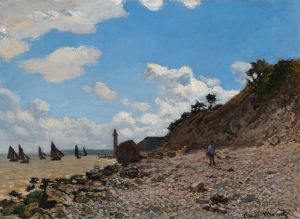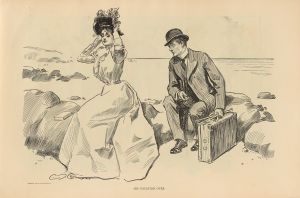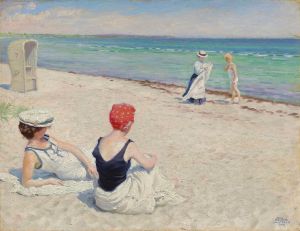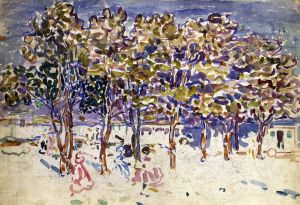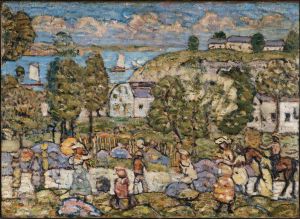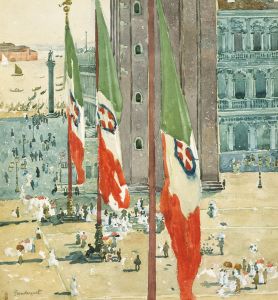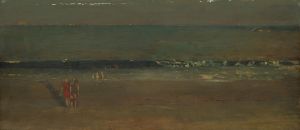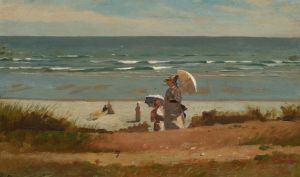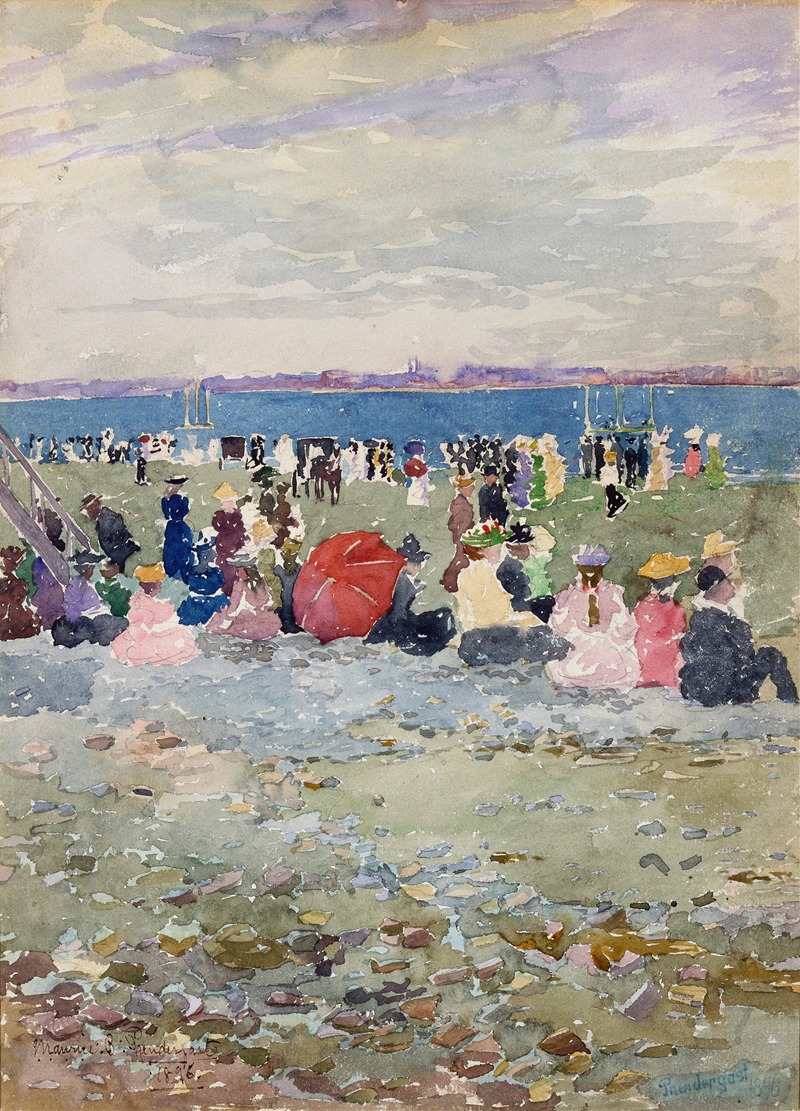
Revere Beach
A hand-painted replica of Maurice Prendergast’s masterpiece Revere Beach, meticulously crafted by professional artists to capture the true essence of the original. Each piece is created with museum-quality canvas and rare mineral pigments, carefully painted by experienced artists with delicate brushstrokes and rich, layered colors to perfectly recreate the texture of the original artwork. Unlike machine-printed reproductions, this hand-painted version brings the painting to life, infused with the artist’s emotions and skill in every stroke. Whether for personal collection or home decoration, it instantly elevates the artistic atmosphere of any space.
Maurice Prendergast's "Revere Beach" is a notable example of American Post-Impressionist painting, reflecting the vibrant and innovative style that Prendergast was known for. Painted around 1896, this work captures the lively atmosphere of Revere Beach, which is located just a few miles north of Boston, Massachusetts. Revere Beach holds the distinction of being the first public beach in the United States, established in 1896, and quickly became a popular destination for city dwellers seeking leisure and recreation by the sea.
Prendergast, born in St. John's, Newfoundland, in 1858, moved to Boston with his family in 1868. He was largely self-taught, though he later studied at the Académie Julian in Paris, where he was influenced by the burgeoning Post-Impressionist movement. This influence is evident in "Revere Beach," where Prendergast employs a vivid palette and a distinctive style characterized by bold colors and flattened forms.
The painting depicts a bustling scene at the beach, filled with people enjoying a day by the ocean. Prendergast's use of watercolor and gouache on paper allows for a fluidity and brightness that captures the essence of a sunny day at the seaside. His technique involves the application of small, mosaic-like brushstrokes, which create a sense of movement and liveliness. This method also reflects the influence of French artists such as Paul Cézanne and Georges Seurat, whose works Prendergast would have encountered during his time in Europe.
In "Revere Beach," Prendergast's composition is both dynamic and harmonious. The figures are arranged in a rhythmic pattern across the canvas, with an emphasis on the interplay of light and shadow. The beachgoers are depicted in various activities—strolling, sitting, and socializing—each figure rendered with a sense of individuality despite the stylized approach. The horizon line is kept high, focusing the viewer's attention on the human activity in the foreground, while the ocean and sky form a serene backdrop.
Prendergast's work is often celebrated for its joyful depiction of leisure and modern life, and "Revere Beach" is no exception. The painting not only captures a specific moment in time but also reflects broader themes of urbanization and the changing nature of public spaces at the turn of the 20th century. As cities expanded and transportation improved, places like Revere Beach became accessible to a wider range of people, symbolizing the democratization of leisure.
Today, "Revere Beach" is held in high regard as part of Prendergast's oeuvre, showcasing his unique contribution to American art. His ability to blend elements of Impressionism and Post-Impressionism with his own innovative techniques has earned him a lasting place in the history of American painting. The painting is part of the collection at the Museum of Fine Arts in Boston, where it continues to be appreciated by audiences for its vibrant depiction of a quintessentially American scene.






